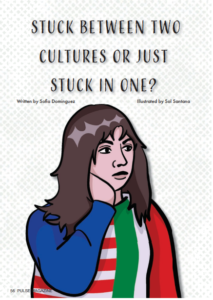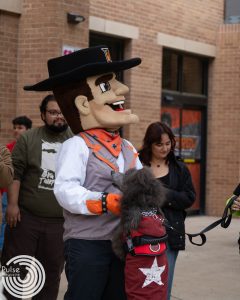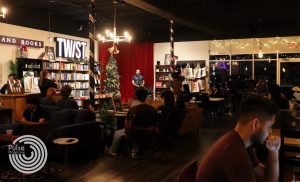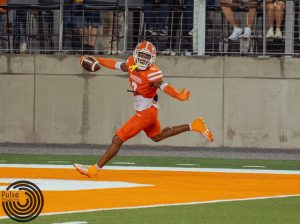A Celebration: Dia de los Muertos
McALLEN, Texas—Historically and socially, Nov. 1 seems to be overlooked. Unlike other dates such as Dec. 25, Feb. 14 or July 4, Nov. 1 is not a well-known date to many Americans. However, for the Hispanic community, the date carries great significance. Every year, from Nov. 1 to Nov. 2, Hispanics celebrate Dia de los Muertos, the day of the dead. Dia de los Muertos is a holiday rich with history. Dr.David Bowles, an associate professor in the department of literatures and cultural Studies, explained that this tradition started, “After the Spanish invasion. What happened was there was kind of like this coming together of the Catholic holidays of All Hallows Eve and All Saints Day at the end of October [and at the] beginning of November. There’s a three-day kind of religious holiday that blends with these Mesoamerican traditions.”
In addition, during the time of the Spanish invasion, natives such as the Aztecs and the Mayans had their own way of life and unique practices. Specifically, the tradition that evolved into Dia de los Muertos focused on celebrating the life of those who had passed. Bowles said the tradition occurred during the “two months in the Aztec calendar that were dedicated to revering the dead. There was the feast, The Little Feast of the Dead and The Great Feast of the Dead. So, one of them was more about focusing on nobility and heroes and things like that. The other one was more about focusing on you know, family members, and you know, just common people that passed away.” The Spanish invasion led to the blending of the two traditions to create Dia de los Muertos.
Despite the fact that there was now a singular holiday that reflected both the Catholic culture and the Mesoamerican culture, Bowles explained that Dia de los Muertos was still considered an indigenous holiday and it “was a pretty common holiday [in Southern Mexico], whereas in Northern Mexico, maybe not so much, because there was less influence of those indigenous holidays that had existed before the invasion.” Nevertheless Bowles said the celebration got bigger with time and he attributed some of its growth to the Chicano movement.
He said, “In the 1970s, in the U.S., Mexican Americans, especially people who would have self [identified] as Chicanos because they were like more activist or … they were trying to emphasize the indigenous part of their heritage [and] began to import the Day of the Dead into the U.S. because before then, frankly, among Mexican Americans, and [Mexicans], it really wasn’t very common.” He said bit by bit, Dia de Los Muertos began gaining popularity and eventually became a part of the United States’ calendar like other important holidays, such as New Year’s Day.
Today, Dia de los Muertos focuses on celebrating the lives of the dearly departed. While there are many different ways to celebrate during the two-day holiday, families and friends typically put up an “ofrenda,” which is an altar. Bowles said these altars typically have “an image of the dearly departed, usually candles and then usually things that were near and dear to them, favorite foods that are drinks and things of that nature. They can be, you know, really, really ornate and complex. Or they could be quite simple.”
There are also several symbols that are associated with Dia de los Muertos. Most notably, one might see a “calavera,” which is a skull, and the traditional flower, the marigold. According to Bowles, these symbols represent death and serve as a reminder that death is a commonality for everyone. In addition to these symbols and ofrendas, Bowles said the biggest celebration are intimate gatherings one might have. He said, “You invite people over and kind of have a little bit of a feast and celebrate them [departed ones], tell their stories, reminisce about the silly things they did or the brave things they did.” This, he explained, gives families and friends the opportunity to reflect on their loved ones who have died and gives them a sense of closure and remembrance.
For UTRGV freshman student Sergio Martinez, a psychology major, celebrating Dia de los Muertos means surrounding himself with family. He said, “My family comes over and we have a big dinner to celebrate the lives of our ancestors and it’s a great time all around.” Whether it is a meal with family, visiting your dearly departed at their gravesite or putting up an ofrenda, Dia de los Muertos is whatever one makes it. Celebrating it can look different for everyone.
Nevertheless, on Dia de los Muertos, the focus is to celebrate life and spend time reflecting on the dearly departed. Although many celebrate it in different ways, the main sentiment of the holiday remains the same.








